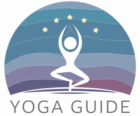Introduction
Given the lifestyle we live in today’s world, pain in the neck, upper back, shoulders, and lower back is common. Neck pain is a common pain area for many people. It occurs due to many reasons. It can be due to a sedentary lifestyle, frequent forward movements, working while leaning over a laptop or smartphone, poor posture, etc.
Here ergonomics play an important role. How you sit, how you stand, how you work on a laptop, how you watch TV, how you sleep all affect the neck muscles. Frequent neck pain or even neglecting neck pain can lead to serious conditions such as headaches, and cervical spondylitis.

How to deal with neck pain
The neck is shallow and concavely curved. It is supported by neck muscles. This natural curve can help you straighten based on your daily habits and lifestyle. When he straightens up, his neck, head and shoulders ache.
The pain may last a day or become chronic. Or it lasts for several years. Yoga can be an effective way to treat neck pain. Yoga has always emerged as an effective remedy when it comes to any pain.
which allows practitioners to better manage pain. With neck pain, yoga and other basic exercises can help improve functional range of motion. Provides movement to the muscles and connective tissues, releasing stiffness and tension as well.
Read More 13 Effective Yogas To Relieve Gas And Bloating
Yoga exercises for neck pain
Bend forward and stand
As you bend forward in a forward bend, let your neck drop and relax. This will help reduce stress and stiffness.
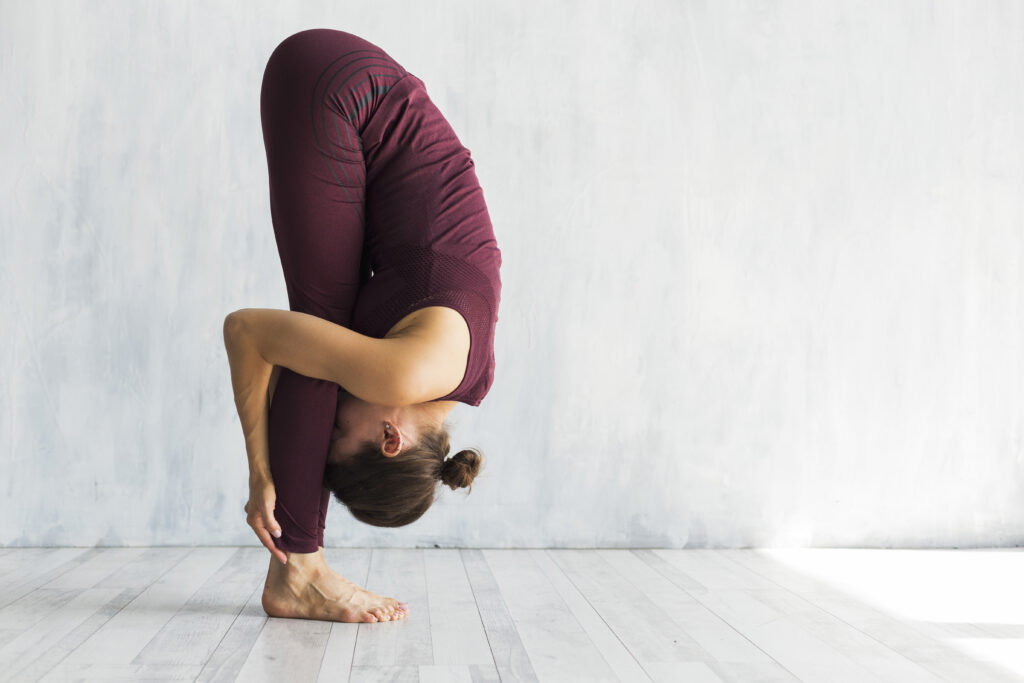
How to do
1. Stand straight with your feet on the mat and your arms at your sides. Now gently place your hands on the thighs and start bending from the waist. You can bend your knees slightly.
2. Bring your palms close to your feet and keep your chest touching your thighs. If possible, straighten your knees and grab your ankles.
3. Hold there for a few breaths and then slowly return to the starting position.
Read More 5 Effective Yoga Poses For Thyroid
Camel pose
Camel Pose is an effective backbend that stretches and helps strengthen the neck, shoulders and back. It is very good for the thyroid and relieves tension from the neck area. It works to stretch the upper trapezius muscles by strengthening the anterior neck muscles. This causes strain on the back of the neck and shoulders
decreases. It also gives the neck a range of motion. Attributes If you bend forward.
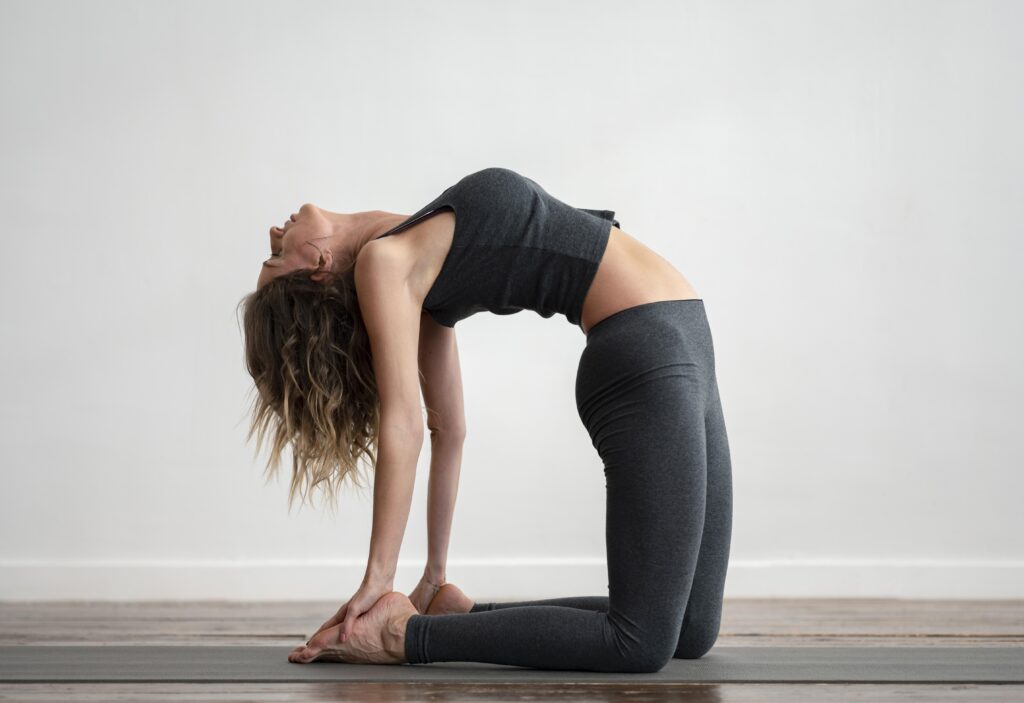
How to do
1. Kneel in a kneeling position making sure hips and knees are hip-width apart and in line with shoulders.
2. Now push the thighs and hips forward with your hands on the waist. Because you slowly start to back off. Now bring the right hand to the right heel and the left hand to the left heel. Now slowly pull your head back.
3. Stay in this position for a few slow deep breaths.
4. To come out of the mudra, release your hands and support your back and slowly come up. Rest in child’s pose for 5 minutes.
Cat-cow pose
Bending and lengthening the neck in this asana helps to relieve tension, tight muscles and stiffness. This pose stretches the muscles and also strengthens them. And it’s a wonderful move after working all day in front of the laptop.
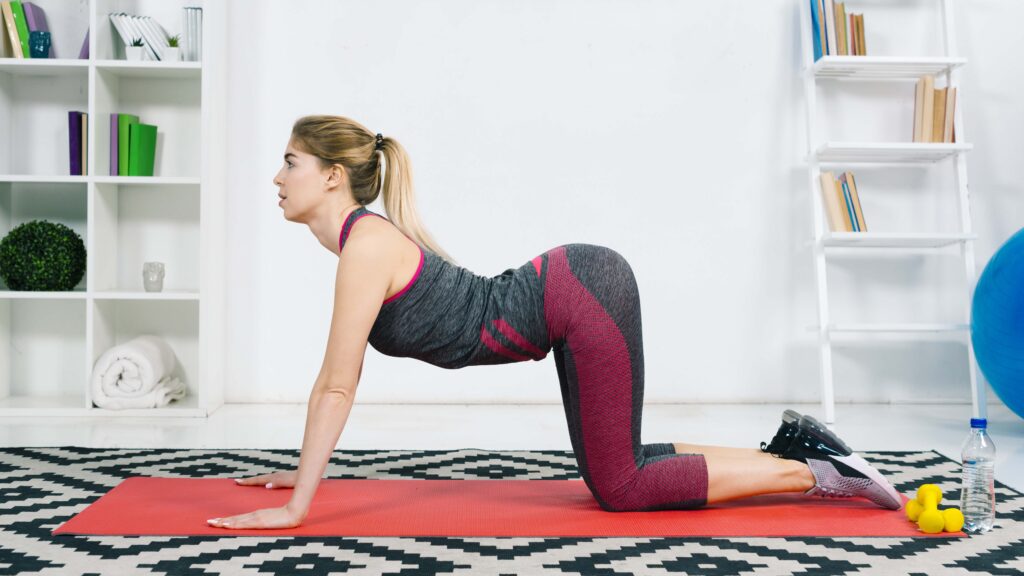
How to do
1. Come onto all fours with palms under shoulders and knees under your hips. Make sure your weights are evenly distributed on all fours.
2. Inhale and exhale as you lower your belly toward the mat. There will be an arch behind you as you do this. Stretch your neck and throat by looking up at the ceiling.
3. On an exhalation, arch your back by pulling the navel toward the spine and tuck your chin into your chest as you go up.
4. Continue this movement for 5-10 breaths. Let your breath guide you through the movement
5. Exhale after a few rounds and come into child’s pose.
Thread-the-needle pose
This is a great asana to relieve tightness and tension in the neck, shoulders and upper back. It provides per movement by relaxing such muscles.
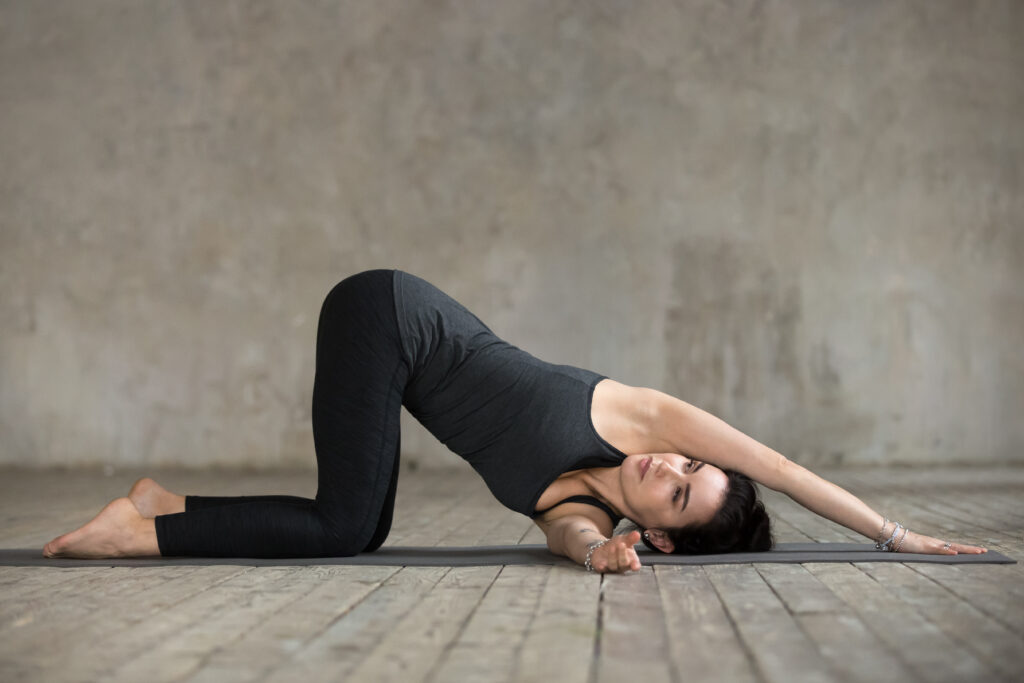
How to do
1. Start in a neutral position on all fours. Bend your toes down with your hands under your shoulders and your knees under your hips.
2. Open your chest to the right by extending your right arm towards the ceiling. Keep your eyes on your raised hand.
3. Now move your right hand below your chest. Your torso should naturally turn towards your face. Both knees and left hand should be placed on the ground for support.
4. Continue to slide your right arm across the mat until your right shoulder rests on the mat.
Extend your left arm over your head with your fingers touching the mat and the right side of your head on the mat. Continue moving the right fingertips to the left until you feel a stretch. Focus on your breath while holding this pose.
5. Now repeat this asana from the other side.
Puppy pose
Perfect for de-stressing, stretching the back, upper back and also stretching. This posture relaxes the shoulders and reduces any discomfort.
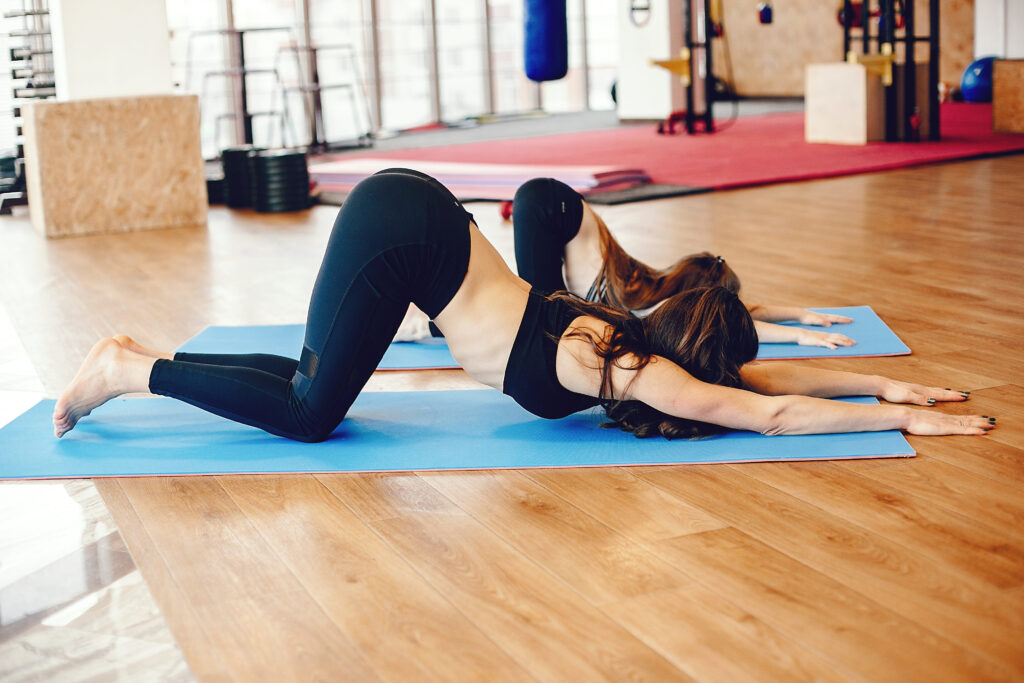
How to do
1. On all fours, bring the palms under the shoulders and bring the knees under your hips, as you do for Margariyasana. be equally distributed on all fours.
2. Now bring your hands past your shoulders and place them end up on the mat in front of you.
3. While slowly inhaling and exhaling, bring your chest and chin close to the mat and bend forward, keeping your hips and thighs in place.
4. Make sure your upper body is stretched. Adjust your arm position as needed for comfort.
5. Stay in this position and take a deep breath.
6. To come out of this asana, raise the upper body and release the arms and come into Vajrasana.
Cobra pose
Cobra pose releases tension in the back, shoulders and neck. Also strengthening the muscles and staying in the position for a few minutes helps to reduce back stiffness. Focus on removing tension.
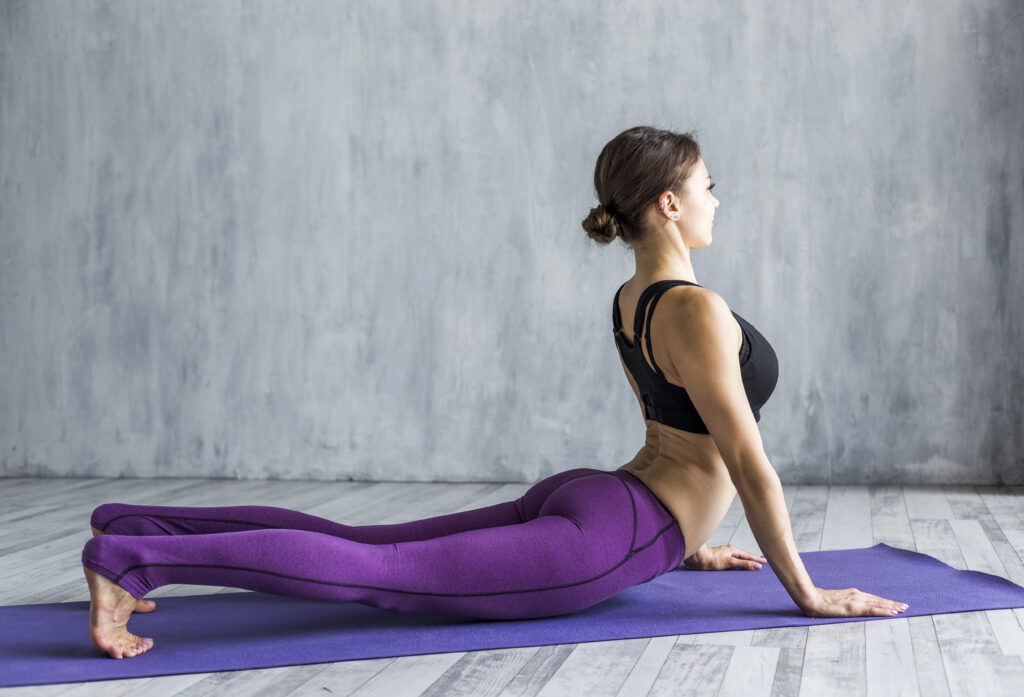
How to do
1. Lie flat on stomach with legs straight and feet together and soles facing upwards.
2. Place the palms of the hands on the floor downwards and slightly to the side of the shoulders with the fingers together pointing forward.
3. Place the hands so that they appear behind the elbows and are close to the sides of the body.
4. Keep your forehead on the floor and close your eyes.
5. Attribution to the whole body is to relax the lower back baby. Now do it gently on the head.
6. Straighten the elbows and use the muscles behind the shoulders to raise the trunk further and arch the back.
7. In the final position the navel can be raised a maximum of 3 mm with the pubic bone in contact with the floor.
8. Whether your arms are straight or not depends on your back flexibility.
Legs-on-the-wall pose
This is a wonderfully restored seat. This relaxing pose helps relieve tension, stiffness and discomfort in the legs, lower back, as well as the upper back, neck and shoulders. Rest in this position for a few minutes at the end of the day as it helps relieve tension and relaxes the muscles.
How to do
1. Lie with your hips against a wall and your legs to one side. Now gently lift the legs up the wall. Adjust your position by making sure you are as close to the wall as possible. Make sure you are comfortable.
2. Now relax the throat and head. Hands should be placed on the side of the body or on the head. Do whatever is convenient for you.
3. Stop here for a few minutes and try taking slow, deep breaths.
4. To come out of this asana, gently push yourself away from the wall by placing your feet to one side.
Legs-on-the-wall pose
Other strains for neck pain
Turn the neck
The neck should be given clockwise and anti-clockwise five to seven times. Do this gently. What’s more, attempt to organize the development with your breath. It is effective in releasing tension, tightness and stiffness in muscles.
Ear-shoulder movement
Bring the right key to the right shoulder and bend the neck to the right. The same should happen on the left side as well. Make sure that your shoulder does not go up. It is also an effective stretch that reduces stiffness by providing range of motion to the neck.
Chin-chest movement
Now bend the neck forward, place the chin on the chest and come back. This movement stretches the neck muscles and relieves stiffness.
Improves awareness
The best part of practicing yoga is that it increases your awareness and ability to be aware of posture and tension. Often, neck pain is the result of poor posture and lack of movement.
Practicing yoga regularly improves your mindset. The breathing pattern also becomes better and healthy as well. The deeper you breathe, the lower your stress level. A good posture helps you breathe more fully. All these aspects contribute greatly to managing and also relieving pain.
Separate thoughts
The mind is a tender and sensitive part of the body. Ignoring pain can lead to serious and chronic conditions. 15 to 20 minutes of exercise every day can make a big difference. And your health and well-being may increase. Join a yoga class with an experienced teacher to experience the profound benefits.
